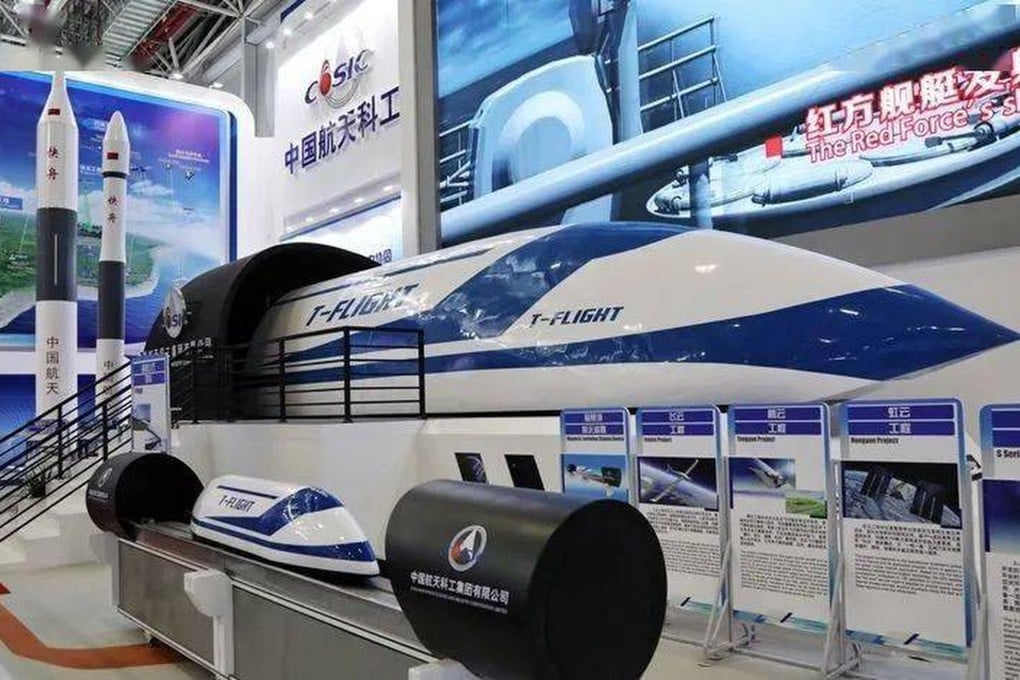China tests high-speed hyperloop ‘flying train’ in 2km vacuum tube
- Ultra-high-speed train – designed to reach 1,000km/h – achieves controlled navigation, stable suspension and safe stopping, report says

China has carried out another test run of its maglev hyperloop project that is designed to reach a top speed of 1,000km (621 miles) per hour.
It was the first time the integration of the train’s systems has been put to the test, which was carried out in a 2km tube with a low-vacuum environment in Datong, in the central province of Shanxi.
The project developer did not disclose how fast the train went during the trial run but said the results were in line with their estimates, the official Science and Technology Daily reported on Monday.

It said the superconducting maglev vehicle achieved controlled navigation during the test, its suspension was stable and it stopped safely. Its track closely matched the theoretical trajectory, according to the report.
Key technologies were put through their paces – including the large-scale vacuum environment, superconducting navigation control technology, and the coordination of systems in a low-vacuum environment.
“This test improved the overall technical maturity of the system and laid a solid technical foundation for the next test,” a representative of the project told the newspaper.
Known as the “high-speed flying train”, the hyperloop project was jointly developed by the Shanxi provincial government and the state-owned China Aerospace Science and Industry Corporation.